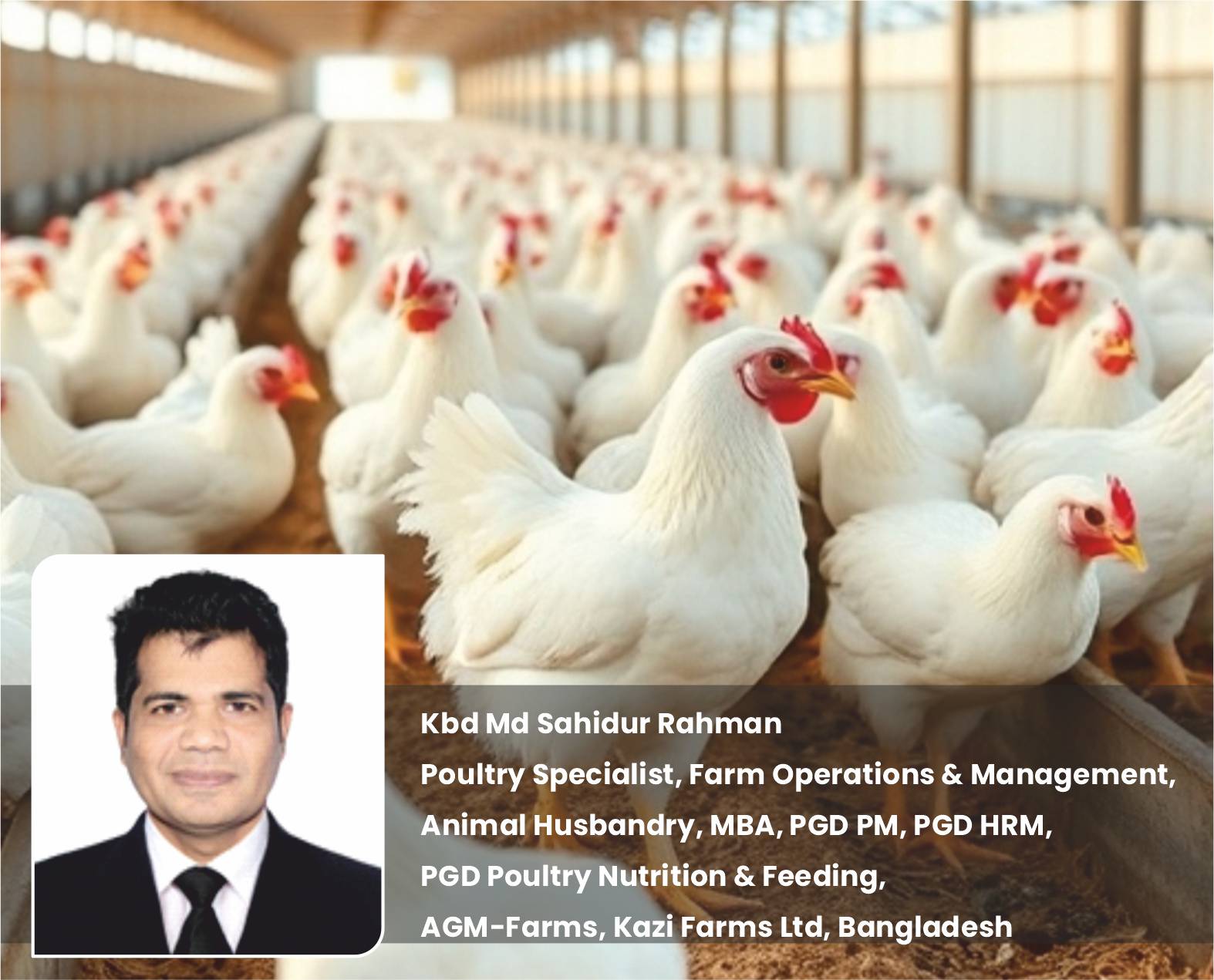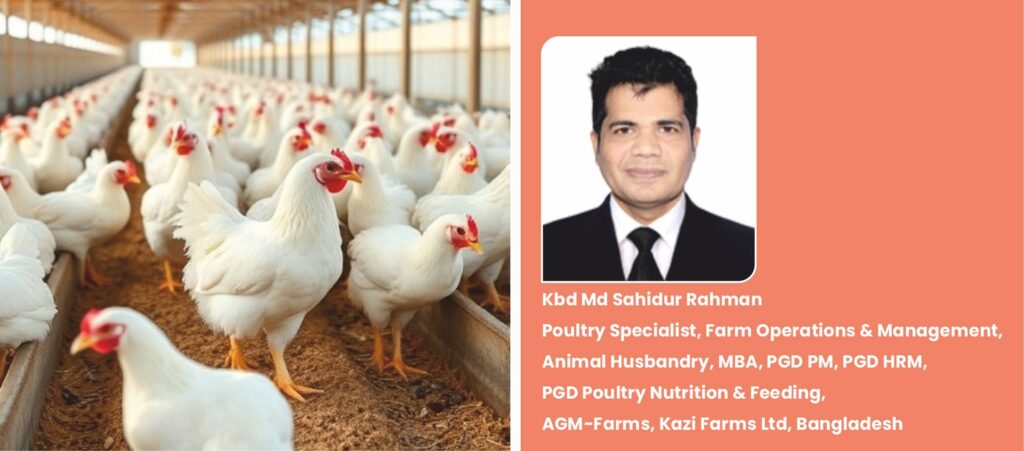Importance of Grading in Poultry Breeder farm Operations
Grading in poultry breeding is the process sorting birds into categories based on their body weights. Grading is the process of sorting individual birds into categories based on bodyweight (super light, light, average, heavy) so that birds within respective categories can be managed back to standard. Grading is the process of shorting of all individual birds in a flock (both Male & Female separately) into 3 sub-populations based on body weights (physiological state) so that each group can be managed back to the standard to have perfect uniformity in the whole flock at the point of Lay (POL). A uniform flock is easier to manage than a variable one; birds in similar physiological stale will respond more similarly to managemental factors.
Background of Grading
There is always a natural variation in a flock, even at day old. At placement, the chick body weight in a flock should have minimum variation. As chicks grow, the variation in the flock increases further due to difference of response of individual birds to factors like vaccination, disease, differing competitiveness of feed, etc. The increased variation reduces overall flock performance and makes the flock management much more difficult.
Understanding the Principles of Grading
Grading is a systematic process that adheres to well-defined principles. It’s a great way to improve the uniformity of a flock!
With grading, the flock is separated, and groups of smaller and bigger birds are formed to improve the total flock uniformity. The grading principles serve as guidelines to ensure consistency, and fairness while classifying birds. The primary principles of grading are the following:
1. Objectivity: Grading should be based on measurable and observable characteristics, minimizing subjective judgments.
2. Traceability: Detailed records should be maintained to track the grading process and facilitate future analysis.
3. Continuous Improvement: Grading practices should be regularly reviewed and updated to incorporate advancements in breeding management.
Purpose
Grading improves uniformity in a flock by separating birds into groups based on their weight so that they can be managed back to the standard.
Benefits
A uniform flock is easier to manage because birds in similar physiological states respond similarly to management.
When to grade
Grading is usually done when the flock is 7–14 days old, and then again at 4, 8, and 12 weeks of age. It’s recommended to grade as soon as possible so that the birds can recover from growth retardation.
How to grade
To grade, you can:
1. Weigh a minimum of 2% of the flock to calculate the average weight and variation in body weight.
• Measure the variation in body weight using the coefficient of variation (CV%) or uniformity (%).
• Separate the birds into categories based on their weight.
• Manage each group to bring them back to the standard weight.
Grading Procedure
Depending on the uniformity 3 to 4 sub-populations may be made; Heavy, Medium, Light & Super light (if necessary). Some breeder houses have fixed pen or partitions and some houses has adjustable partitions; in both cases at least one pen shall be left empty during chick placement for Grading operation. It is better to have adjustable Partition and divide the whole house in 4 parts for Female & 4 parts for Male; with 2 parts each for medium size group (usually over 65% of total population), One part each for Heavy & Light Weight group for both Male & Female. Arrange Brooding in one part each for Male & female separately. Start grading on 8th day itself and shift them in different pen, keepingthe lighter group at the entry side. With advancing age & body weight, arrange 100% grading at the end of 4, 8 & 12 weeks and give floor space accordingly in the respective pen. In case of fixed pen, calculate the floor space, no of feeder & drinker as per maximum no of birds to place after grading. Similarly, in case of adjustable pen adjust the size as per no of birds to be housed along with sufficient no of feeder & drinkers. If stocking density in a pen is not adjusted with floor space, feeder & drinker space, then grading will cause more problem.
Variation in a flock can be measured by 2 different ways:
1. Coefficient of Variation (CV%) – this measured the variations of body weight within the flock, the flock with lower CV’s is a less variable flock.
2. Uniformity% – this measures the evenness of body weights within a flock, the higher the uniformity the less variable the flock is.
Key Issues during Grading:
• Start Grading of Male & Female simultaneously @ 2nd Week or 29th day.
• A successful Grading should minimize the variability in graded flock than the original flock with the CV% shall be around 8 and Uniformity above 80%.
• Each sub-population should be re-weighted & counted to confirm the Av Body Wt and CV%/ Uniformity so that projected (re-scheduled) target body weights & Feeding rates can be determined.
• Inaccurate bird counting will lead to incorrect quantity of Feed, which invite future problem
• Each sup-population should have own dedicated feeding system. Otherwise, supplementary feeding must allow even distribution of feed & adequate feeding space per bird.
• Ensure the stocking density, feeding & drinking space are consistent as per guidelines after grading; specially for the adjustable size pen.
Flock Management after Grading:
• Following grading, the flock need to be managed to achieve targeted body weight in graded group in uniform & coordinated manner. Post grading management to maintain uniformity within graded pen is more important than the grading itself. The most important issue is the post grading management results in the birds converging to a common target body weight at Transfer to laying house.
• Post Grading Feed Quantity should be adjusted to individual pen and graded birds body weights to bring each sub-population gradually back to the target line.
Challenges for Grading
• Grading is often seen as a herculean task. Add to that the misconception that it involves too much work for a very little return, and there are numerous reasons why farm owners do not want to grade their flock.
• Increased costs due to more labor.
• Stressful for birds to move between the pens.
• Feeder & drinker configurations. Managing feed times.
Take Home Message
• Feed level must be recalculated on a weekly basis calculating for changes in liveability.
• Feed recalculation twice a week gives excellent results specially for Light weight group where higher increase level is required.
• Feed calculation based on individual pen birds Av Body Wt & bird numbers
• Feed level should never be reduced
• Feed level for Light Wt group should remain same first week post grading owing to the fact that reduced competition from heavier birds will give a good amount extra feed to all birds.
• Smaller for Heavy Wt Bird group
• Greater for Lighter Wt Bird group
• Standard for Medium Wt bird group
Never hold feed increment for any group for more than 2 weeks
Post Grading: Continuous Improvement
Flock grading is an ongoing process that requires regular review and refinement. Post-grading activities are essential for continuous improvement and sustained breeding success.
By mastering flock grading and adhering to best practices, poultry breeders can achieve optimal flock management, genetic progress, and long-term profitability in their breeding operations.
With the expansion of the poultry industry, farm owners have looked further in detail about ways to improve the hatching eggs and chick output. With increased research, what we know is that one certain way of increasing the overall performance is by maintaining flock uniformity.
A well-graded flock is bound to be more predictable, easier to manage, and more profitable. Combine this with the extensive features that seasoned poultry management software offers, and farm owners will start managing a flock with much greater production potential.







